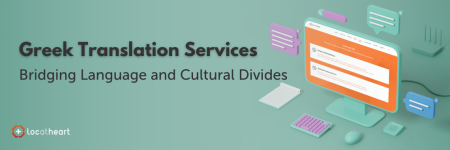How to translate content using an English master version
We have described the benefits of using intermediary translation in our previous blog article, From Polish into Malaysian: when to use a pivot language. Included in the text were examples of situations where adopting this approach could turn out to be the best option. We have also explained when it is more advisable to opt for direct translations. Now we will guide you through the whole process of translating content with the use of an English master version.
How to prepare an English master version – examples included!
If our client provides us with a Polish source text, the first ones to engage with it are our internal translators (Poles) working on PL > EN pairs – they are responsible for preparing the English master version. This process is a bit different than in the case of a ‘standard’ PL > EN translation, where the end product is a text directed to British people or to Americans. When preparing a master file, the most important thing is to be precise, as the target text should constitute an extremely faithful rendition of the source text. It might happen that one will have to chose between accuracy and stylistics – in such cases, the former takes precedence.
How can we see to it that indirect translations are as accurate as possible? We have established a couple of ground rules to that effect:
Keep the content of the translated text intact
If, for instance, the Polish original mentions that it’s worth keeping the puzzle pieces in a plastic bag so that they ‘won’t escape from the box’, then this light-hearted piece of advice is kept as is, to keep the flavour of the text, even if (in theory) we could do without it.
Avoid ambiguity
Sometimes using the first English grammar structure that comes to mind can result in the sentence being open to several different interpretations (even if some of them are likely to be overlooked by a casual reader) – therefore we choose a form that is completely devoid of ambiguity. The bare minimum would be to use a more natural but ambiguous variant and make a suitable comment in a separate file with instructions (we will write more about it later on).
Dispel any doubts
To that end, we create an Excel file with all the segments that could be understood in an incorrect way. In a relevant column, all the context details and complexities are explained.
In the Polish source text, we address the reader directly. The English translation should include this remark: ‘You is singular here.’
We have to translate a text on the history of the Polish People’s Republic, and it mentions milicja – a state-controlled organisation that in 1990 would be transformed into police. We could include information for translators from ex-Soviet Bloc countries that they are welcome to use equivalent historical terms (like милиция or miliția).
Let’s say that the original text mentions ryba or ryby. In English, ‘fish’ is both a singular and a plural form of the word, so we should make a comment on which one to use (even if the grammar of the sentence leaves no doubt as to the form – it’s always better to explain too much than explain too little).
Use placeholders where appropriate
When working on a party game full of cultural references to the players’ country of origin (e.g. ‘Sing something like Zenek Martyniuk’ – a popular Polish disco polo performer), we would use curly brackets in the English master version to indicate the category of the replaceable term. When it comes to the example above, we could write, ‘Sing something like {name of a popular male disco singer from your country}.’ Here, accuracy is paramount too. Let’s say that the original version of the game mentions Polish actor Bogusław Linda. The placeholder could look like this: ‘{acclaimed actor and film star in his 60s, versatile but known especially for playing tough guys}.’ If it’s hard to find a perfect equivalent for a given person/occurrence/thing in another language, the translator will simply choose one that matches meaning of the original as closely as possible. However, we can do no wrong if we stay precise.
Use the same terminology consistently
Especially in the case of long-term projects! If we’re writing about swetry in English, we have to diligently use the same word, either ‘jumpers’ or ‘sweaters’, but not both interchangeably. Inconsistent use of terminology could confuse translators working on their own language versions. If a description of a board game mentions ’pieces’, we shouldn’t use the word ‘tokens’ for the same elements, as we could end up with one big subject-matter mess. To keep things in order, we can rely on dedicated software, like Xbench. An app of this kind will pin-point all the places where the same keyword has been translated differently. To let it do its job, we have to create a glossary that will be used throughout the project.
When the English master version is ready
When the English master version is ready – whatever impression you might have after reading the above descriptions, usually the process doesn’t take too long – it is passed over to target language translators. In their case, there’s no real difference between this and any other kind of translation. They approach the task in the very same way and deliver accurate and natural sounding translations for their mother tongue. If additional comments included in the auxiliary Excel sheet are not enough to dispel all the doubts, specific questions are sent to the people responsible for the master version, and then – if they couldn’t help – directly to the client. Such situations, however, do not occur more frequently than in the case of direct translations which can also be marred by vagueness.
Additional uses of master version
In the case of a multilingual project involving more (even a dozen or so) target languages, the process of the final content delivery can be improved by putting all the completed translations in a sheet file. They should be divided into segments – then we will be able to find, with ease, translations of the same fragments in the source version, in the master version, and in the target versions.
Sometimes, the client does not expect you to include the English master translation along with the source text and target texts, simply because they did not order it. However, if it turns out later on that the client wants to publish the English version as well, the master translation will come in handy. It will have to be polished a bit, so that passages of text purposely simplified or ‘flattened out’ for other translators’ convenience are back at the level of English native speakers. And these are exactly the cases where we do employ native English speakers.
What is interesting, ‘translating through translation’ is not unique only to written translations. A common practice in oral translations is the so-called relay. You might have observed it while watching a session of the European Parliament. Because every language is treated equally there, it is necessary to translate everything into every listener’s language. One can easily imagine a situation when a politician from Malta is giving a speech and among the audience envoys from Romania are present. In all likelihood, there are few translators versed both in Maltese and Romanian, therefore indirect translator is necessary. An interpreter translating from Maltese to English (it’s not difficult to find someone skilled in both languages) will provide both the content for the English-speaking audience and a source for the translator specialising in the EN > RO pair. English will not always be chosen for intermediate translations, yet it happens more often than not.
Final thoughts
The whole process described above and employed at locatheart can be visualised like this:

To conclude the subject of translating with the use of an English master version, let us list the pros and cons of this solution.
Pros:
- Save the time: although you can’t just prepare a master version on the spot, in the case of large projects it will help you cut the time needed to create translations.
- Save the money: translating through English, especially when it comes to less popular languages, is usually more cost-effective than direct translations.
- Secure the quality: in the case of less popular languages, it will be harder to find a translator specialising in a given topic for both of them than to find a translator versed in one of those languages and English (given the popularity of this language). What is more, having experts from locatheart prepare a master version is the best guarantee that all potential issues with the text will be addressed and resolved.
- See to consistency: using the same clear terms repeatedly allows for keeping the target texts in order even when the source text – e.g. in Polish – is not always consistent (our linguists are able to identify problematic entries and see to it that the terminology is consistent already in the master version, therefore limiting the risk of inconsistencies appearing in the final versions).
Risk:
If an inaccurate master version has been created, contextual variations might appear, especially if the content includes elements specific to a given culture. Leaving grammatical aspects without any detailed explanations might also result in disastrous consequences.
At locatheart, we are experienced in intermediary translations and we recommend this solution particularly for e-commerce projects.
We understand how important it is to prepare a proper master version of a text, and that’s why our translations for various target languages are of a particularly high quality.
Feel free to contact us if that’s the solution you need!


![Translating Japanese Anime versus Western Animation for Children [featured image] - translation agency LocAtHeart](https://locatheart.com/wp-content/uploads/2021/11/LAH_blog_naglowek_nowy_rozmair-3-1-450x231.png)



Leave a Reply